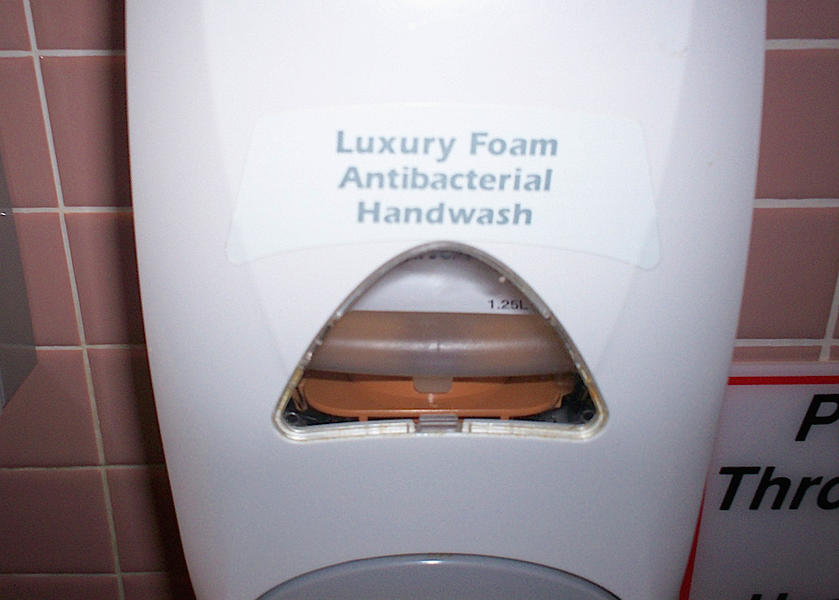Which group will freak out first about Minnesota's antibacterial soap ban?
CC by: Paul Swansen


Last week, Minnesota's legislature passed, and Gov. Mark Dayton (D) signed, the country's first ban of triclosan in most retail products. What's triclosan? The active ingredient in about 75 percent of antibacterial soaps and body washes in the U.S. It's also in dish and laundry detergent, and even some toothpastes. The ban doesn't take effect until 2017, but state Sen. John Marty (D), one of the bill's lead sponsors, said Monday he expects the chemical to be phased out before then.
So what's wrong with triclosan? "Studies have raised concerns that it can disrupt hormones critical for reproduction and development, at least in lab animals, and contribute to the development of resistant bacteria," explains The Associated Press' Steve Karnowski. On top of that, there's no evidence that it gets our hands any cleaner. Still, Americans don't like being told they can't buy something — remember the flap over incandescent light bulb regulations? — and triclosan is produced in somebody's congressional district.
Once this ban starts spreading to other states, some group or lawmaker is going to call foul. It's practically the American way. Here's a better idea: Take a few seconds to learn how to properly wash your hands with regular soap.
The Week
Escape your echo chamber. Get the facts behind the news, plus analysis from multiple perspectives.

Sign up for The Week's Free Newsletters
From our morning news briefing to a weekly Good News Newsletter, get the best of The Week delivered directly to your inbox.
From our morning news briefing to a weekly Good News Newsletter, get the best of The Week delivered directly to your inbox.
A free daily email with the biggest news stories of the day – and the best features from TheWeek.com
Peter has worked as a news and culture writer and editor at The Week since the site's launch in 2008. He covers politics, world affairs, religion and cultural currents. His journalism career began as a copy editor at a financial newswire and has included editorial positions at The New York Times Magazine, Facts on File, and Oregon State University.
-
 Nobody seems surprised Wagner's Prigozhin died under suspicious circumstances
Nobody seems surprised Wagner's Prigozhin died under suspicious circumstancesSpeed Read
-
 Western mountain climbers allegedly left Pakistani porter to die on K2
Western mountain climbers allegedly left Pakistani porter to die on K2Speed Read
-
 'Circular saw blades' divide controversial Rio Grande buoys installed by Texas governor
'Circular saw blades' divide controversial Rio Grande buoys installed by Texas governorSpeed Read
-
 Los Angeles city workers stage 1-day walkout over labor conditions
Los Angeles city workers stage 1-day walkout over labor conditionsSpeed Read
-
 Mega Millions jackpot climbs to an estimated $1.55 billion
Mega Millions jackpot climbs to an estimated $1.55 billionSpeed Read
-
 Bangladesh dealing with worst dengue fever outbreak on record
Bangladesh dealing with worst dengue fever outbreak on recordSpeed Read
-
 Glacial outburst flooding in Juneau destroys homes
Glacial outburst flooding in Juneau destroys homesSpeed Read
-
 Scotland seeking 'monster hunters' to search for fabled Loch Ness creature
Scotland seeking 'monster hunters' to search for fabled Loch Ness creatureSpeed Read



